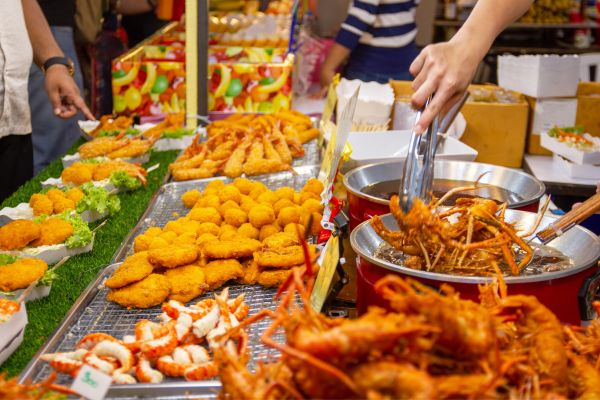Street food experiences have this magical ability to connect people, places, and flavors in a way that no fancy five-star restaurant can. It’s messy, loud, colorful, and often a little unpredictable—but that’s exactly what makes it unforgettable. Whether you’re wandering down a bustling night market in Bangkok, grabbing a quick taco from a roadside stand in Mexico City, or biting into a freshly fried samosa on a busy street in Delhi, the story of a city often unfolds best through its street food.
Why Street Food Experiences Are Special
The thing is, street food isn’t just about eating. It’s about the atmosphere. You’re standing shoulder-to-shoulder with locals, waiting for your turn as the sizzling of woks, the aroma of spices, and the laughter of strangers create a kind of symphony. Street food experiences feel raw and authentic because they strip away the formalities of dining and bring you closer to the culture.
Unlike polished restaurant menus, street food experiences often showcase recipes passed down for generations. Each bite feels like a chapter of tradition—whether it’s the smoky char on skewers in Indonesia or the creamy, spicy curry ladled over rice in Sri Lanka.
The Global Flavors of Street Food
Travel anywhere, and you’ll quickly realize that street food experiences are universal. Yet each place stamps its own flavor, personality, and story into what’s being served.
In Thailand, night markets light up the streets with pad Thai, mango sticky rice, and grilled satay. In Mexico, tacos al pastor spin slowly on vertical spits, filling the air with the scent of pineapple-marinated pork. In Turkey, doner kebabs and fresh simit bread are sold at nearly every corner. These aren’t just snacks—they’re cultural symbols.
Even in cities like New York or London, food trucks and stalls are redefining what street food means. It’s no longer limited to “cheap eats.” Now, you can find gourmet burgers, Korean barbecue tacos, and artisan doughnuts sold from trucks parked on the busiest streets. Street food experiences are evolving, but the core—bringing food directly to the people—remains the same.
The Social Side of Street Food
Here’s the fun part: street food experiences aren’t just about the food. They’re about people. The vendors, often small family-run businesses, have stories as flavorful as the dishes they serve. Chatting with them can teach you more about the city than any guidebook ever could.
And then there’s the social vibe. Street food breaks barriers. It doesn’t matter if you’re a backpacker on a budget or a business traveler looking for a quick bite—you’ll be standing in the same line, eating the same food, and sharing the same experience. It’s communal dining at its most real.
Adventure on a Plate
Let’s be real—sometimes street food is an adventure in itself. You don’t always know what you’re ordering, and that’s part of the fun. Trying fried insects in Cambodia or spicy hotpot skewers in China might not be for everyone, but for the adventurous foodie, these street food experiences become unforgettable memories.
Of course, it’s not always extreme. Sometimes, it’s the simple things—like the crunch of freshly fried churros in Spain dipped in warm chocolate, or the comforting warmth of roasted chestnuts on a cold winter night in Europe. These little moments remind us that food has the power to anchor memories.
Tips for Enjoying Street Food Experiences Safely
Street food experiences are incredible, but let’s not ignore the elephant in the room: hygiene. While most vendors take pride in their food, it’s still smart to be cautious. Look for stalls with long lines—it usually means the food is fresh and trusted by locals. Watch how the food is cooked, and when in doubt, go for hot dishes straight off the grill or fryer.
Carrying hand sanitizer, drinking bottled water, and pacing yourself are also good ideas. Because trust me, once you get going, it’s way too easy to overeat.
How Street Food Shapes Travel Memories
Think back to your favorite travel memories. Chances are, at least one of them involves food. Maybe it was sipping fresh coconut water on a sandy roadside in the Philippines, or maybe it was biting into a perfect falafel wrap in the middle of a busy Cairo street. Street food experiences stick with us because they engage all our senses—the smell, the taste, the noise, the energy, the chaos.
More than that, street food often becomes the story we tell when we return home. Instead of saying “I went to Vietnam,” we say, “I had the best banh mi of my life in Vietnam.” Food becomes the memory.
The Future of Street Food
Street food experiences are evolving with the times. In some cities, food trucks are stepping in as modern interpretations of traditional stalls. In others, governments are working to regulate and formalize street vendors without stripping away the charm. And let’s be honest—Instagram and TikTok have taken street food to a whole new level, turning hidden gems into viral sensations overnight.
But at the heart of it, the appeal remains the same: accessible, affordable, and absolutely delicious food that brings people together.
Conclusion
Street food experiences are more than just quick meals grabbed on the go—they’re windows into culture, tradition, and everyday life. They’re the heartbeats of cities, the flavors of communities, and the stories of people. Whether you’re savoring noodles at a roadside stall in Asia, tacos under the stars in Latin America, or pastries from a food cart in Europe, street food is a reminder that the best meals often come without white tablecloths or silverware.
So next time you travel—or even if you’re just exploring your own city—don’t skip the food stalls. Dive in, take a chance, and let those street food experiences write a delicious chapter in your memory book.

